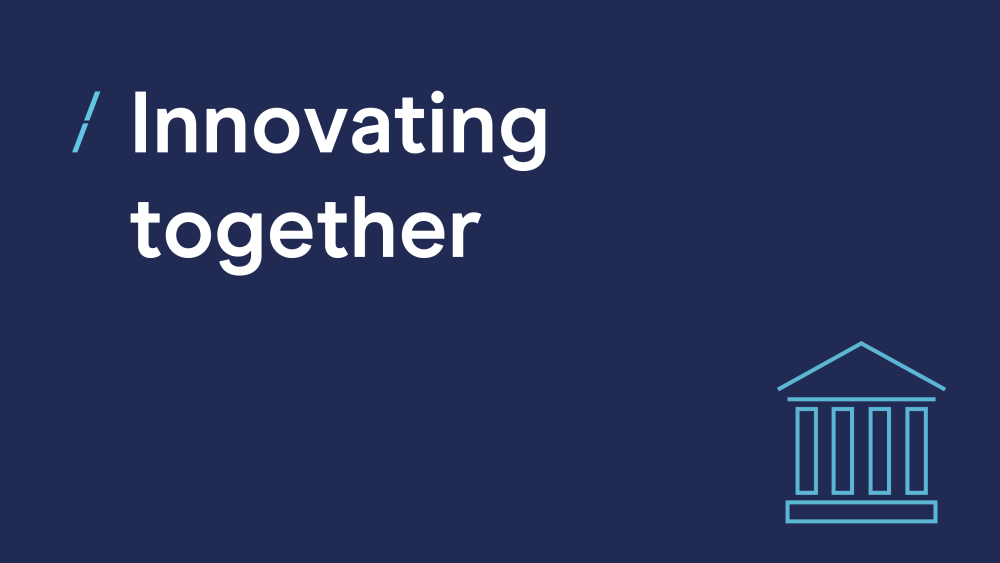Innovating together
08 Apr 2019

Let's start with defining what innovation is.
According to Schumpeter, a political economist who elaborated the first theories around disruption and innovation, innovation refers to any new policy that an entrepreneur undertakes to reduce the overall cost of production or increase the demand for his products.
Neil Perkin, author of the 'Navigating the corporate innovation partner landscape', builds on Schumpeter's model, with a three stage process to advise and guide the public on how to choose an innovation partner:
- Invention: the origination of ideas and concepts
- Innovation: the development of concepts into products and services
- Diffusion: Growth, adoption and expansion
Corporate innovation: four key trends
1. From spasmodic to continuous
There's been a shift towards continuous rather than episodic corporate innovation.
Indeed, a constantly and rapidly changing environment is boosting organisations to invest in innovation, recognising it as a functional imperative for survival. At the same time, the demand for more disruptive, game-changing thinking, ideas and business models is increasing.
Given the scenario, teaming up with partners can facilitate and support businesses in the creation of entirely new propositions.
Consequently, the marketplace for innovation partnerships is increasing in scope, scale, sophistication, and maturity.
2. Increasingly sophisticated
Innovation is climbing the organisations' priority list and companies are dedicating increased funding and resources to establish internal innovation functions and initiatives.
Innovation now touches every part of the business, and its sophistication is constantly increasing.
As such, the innovation partnership landscape has evolved. Where once there were few players (mainly focused on early stage ideas), now there is a vibrant and growing market of potential partners.
Clients need partners that can not only ideate, but that can also build and execute.
3. From physical to digital
Products are becoming services with a concurrent rise of service innovation and design.
Businesses are building direct-to-consumer relationships through digital platforms and subscription services, changing the way in which products in the category are sold and experienced.
4. Innovation as a change of culture
There are a multitude of culture change consultancies that have been brought into businesses to guide the necessary cultural changes and consequentially support the innovation work.
All business leaders speak of wanting their employees to be more entrepreneurial and innovative.
Together is better: benefits of innovation partners
There is no such a thing as 'the perfect way' to do corporate innovation: projects and desired outcomes can be extremely different across the innovation spectrum, as are the paths to getting there.
Innovation partners are being asked to solve a wider and wider range of challenges, mirroring the previously mentioned groups: invention (explore), innovation (do), and diffusion (grow).
These are illustrated below, along with the key tasks involved and their deliverables:

The research conducted by Neil Perkin for AAR, based on a comprehensive series of in-depth interviews along with extensive desk research, delve into changing innovation models and the shifting landscape.
The resulting picture is a market that is highly diverse (particularly in the UK, which was perceived by interviewees as more diverse than the US) and built on a broad range of potential partners.
For further details on how you can find your perfect innovation partner, and seamlessly including it in your processes and culture, refer to the AAR's 'Navigating the corporate innovation partner landscape'.



1.png)
Please login to comment.
Comments